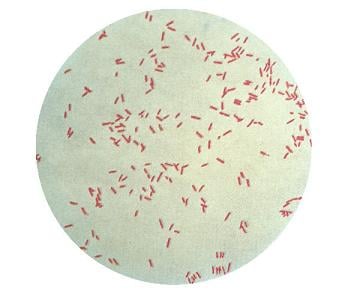Interesting Science Videos
Biochemical Test of Pseudomonas aeruginosa
| Basic Characteristics | Properties (Pseudomonas aeruginosa) |
| Capsule | Some Non-Capsulated and Some are encapsulated (Pseudomonas aeruginosa secretes a capsule-like polysaccharide called alginate- Sumita Jain and Dennis E. Ohman 2005) |
| Catalase | Positive (+ve) |
| Cetrimide Test | Positive (+ve) |
| Citrate | Positive (+ve) |
| Coagulase | Negative (-ve) |
| Flagella | Flagellated (Single) |
| Gas | Negative (-ve) |
| Gelatin Hydrolysis | Positive (+ve) |
| Gram Staining | Negative (-ve) |
| H2S | Negative (-ve) |
| Hemolysis | Beta Hemolytic |
| Indole | Negative (-ve) |
| Motility | Motile (Unipolar) |
| MR (Methyl Red) | Negative (-ve) |
| Nitrate Reduction | Positive (+ve) |
| OF (Oxidative-Fermentative) | Oxidative |
| Oxidase | Positive (+ve) |
| Pigment | Positive (+ve) (Blue/Green) |
| Shape | Rod |
| Spore | Non-Sporing |
| TSIA (Triple Sugar Iron Agar) | Alkali/Alkali (Red/Red) |
| Urease | Negative (-ve) |
| VP (Voges Proskauer) | Negative (-ve) |
Fermentation of |
|
| Adonitol | Negative (-ve) |
| Arabinose | Negative (-ve) |
| Cellobiose | Negative (-ve) |
| DNase | Negative (-ve) |
| Erythritol | Negative (-ve) |
| Fructose | Positive (+ve) |
| Galactose | Negative (-ve) |
| Glucose | Negative (-ve) |
| Hippurate | Negative (-ve) |
| Inositol | Negative (-ve) |
| Inulin | Negative (-ve) |
| Lactose | Negative (-ve) |
| Malonate | Positive (+ve) |
| Maltose | Negative (-ve) |
| Mannitol | Positive (+ve) |
| Mannose | Negative (-ve) |
| Mucate | Negative (-ve) |
| MyoInositol | Negative (-ve) |
| Rhamnose | Negative (-ve) |
| Ribose | Positive (+ve) |
| Sorbitol | Negative (-ve) |
| Starch | Negative (-ve) |
| Sucrose | Negative (-ve) |
| Tartrate | Negative (-ve) |
| Trehalose | Negative (-ve) |
| Xylose | Negative (-ve) |
Enzymatic Reactions |
|
| Acetate Utilization | Positive (+ve) |
| Arginine Dehydrolase | Positive (+ve) |
| Esculin Hydrolysis | Negative (-ve) |
| Lecithinase | Negative (-ve) |
| Lipase | Positive (+ve) |
| Lysine | Negative (-ve) |
| Ornithine Decarboxylase | Negative (-ve) |
| Phenylalanine Deaminase | Negative (-ve) |


Isn’t glucose test for Pseudomonas aeruginosa negative, because it is glucose non fermenter ?
Sorry for the mistake and thanks for the correction. Yes, it should be glucose negative (-ve) for Pseudomonas aeruginosa.
What is the definitive for Pseudomonas aeruginosa?
I did biochemical tests on several bacterial isolates and had different results. but after identifying the type of bacteria, the bacteria is Pseudomonas aeruginosa. Why do these bacteria have different biochemical tests even though they are one type of bacteria?
I have found from multiple sources that this is encapsulated. Is this true?
Ya, there are some sources that say that they are encapsulated. So, we can say they are both capsulated and non-capsulated. They secrete a capsule-like polysaccharide called alginate according to Sumita Jain and Dennis E. Ohman 2005)
Thanks for finally writing about >Biochemical Test of Pseudomonas
aeruginosa – Microbiology Notes <Loved it!
In my Pseudomonas is unable to ferment sugars especially glucose. Please reply
Pseudomonas is glucose positive, means it ferments glucose.
Pseudomonas is glucose-non-fermenting. It is only able to oxidase glucose in aerobic conditions.
Isn’t Pseudomonas non-fermentative and oxidative in nature?
Yes…the tube is open it would be positive because it oxidizes glucose not ferment